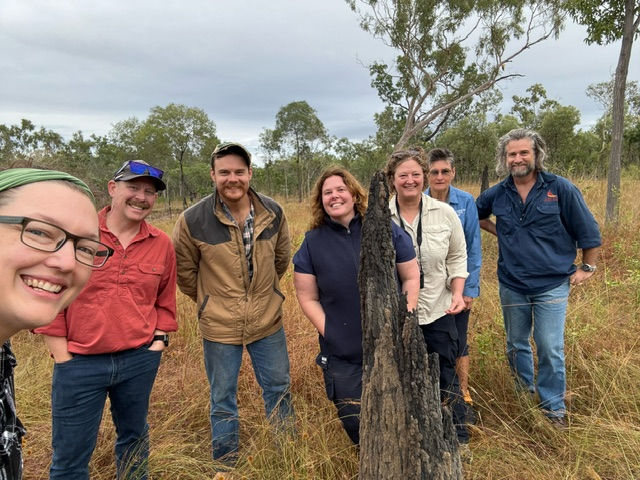Cape Melville trip helps protect critically endangered habitat
- Cape York NRM

- Aug 26
- 3 min read
Project officers from Cape York NRM recently spent four days in Cape Melville National Park (CYPAL), working on a joint project to improve the condition of the Littoral Rainforest and Coastal Vine Thickets of Eastern Australia (LRCVT).
Also known as beach scrub, areas of LRCVT are vital to our coastlines. They provide unique habitat for vulnerable coastal and culturally significant species and act as a natural buffer between the ocean and more fragile ecosystems further inland.
Over the next four years, Cape York NRM will lead efforts to enhance the condition of critically endangered LRCVT along the eastern coast of Cape York Peninsula. The project focuses on addressing key threats, including controlling feral animals and invasive weeds, improving fire management, and better managing visitor access.
Getting to work in Cape Melville National Park (CYPAL)
After travelling 200 km north of Cooktown, project officers Bindi Woodland and Maree Coulson arrived at the Wakooka Creek area to begin their four-day field trip.
Working alongside Traditional Owners and rangers from Cape Melville, Flinders & Howick Islands Aboriginal Corporation (CMFHIAC), together with Queensland Parks and Wildlife Service (QPWS) rangers, the first activity involved a follow-up habitat condition survey to track changes in LRCVT against the 2024 baseline.
Assessments covered vegetation health and potential fuel loads, while wildlife cameras were installed in strategic areas to monitor the impacts of feral animals, particularly pigs and cattle.
The rangers also used drones to map LRCVT sites, and the images and data they collected will be used for future monitoring and management, including high-resolution imagery and canopy and terrain modelling.
Early dry season cultural burn
Littoral rainforest ecological communities are sensitive to fire. Late dry season wildfires in areas with high fuel loads can encroach on LRCVT, killing rainforest plants and allowing fire-promoting species to establish.
To reduce this threat, QPWS and CMFHIAC rangers conducted an early dry season burn as part of this visit to reduce fuel loads around LRCVT areas.
The success of burns is measured using visual fire mapping tools. Recent burns by rangers have shown protective buffer zones can be established without harming fire-sensitive vegetation.
Cape York NRM Project Officer Bindi Woodland said the trip was a great example of organisations working together.
“Thanks to Phillip, Albert, Rodney, and Rowan from CMFHIAC, and Josh Smith and Ebony Stallard from QPWS for making the project trip a success. It also gave us the opportunity to strengthen relationships and learn more about the issues on the ground,” said Bindi.
Reflections of Traditional Owners and rangers from the Cape Melville, Flinders & Howick Islands Aboriginal Corporation
Alfred Michael said that cultural burns were important to keep Country healthy and control invasive weeds.
“The best part of the trip was getting out on Country. I enjoyed learning about the rainforest survey, and I just want to do more now.”
Rowan Hart said future actions for Wakooka Creek included establishing more monitoring plots.
“It was good to understand the difference between littoral rainforest and why it’s important to protect it.”
Phillip Walker said a key moment for him was seeing some of the harm caused by human disturbance.
“Seeing the damage from vehicles on the beach. It’s good to be aware of the impact it causes to these areas.”
Roderick Michael said his highlight was seeing new things and places.
“Every day was good. It’s always good when we come up here."
For more information on Cape York NRM’s project to improve the condition of the Littoral Rainforest and Coastal Vine Thickets of Eastern Australia, visit our website: https://www.capeyorknrm.com.au/what-we-do/#biodiversity
This project is funded by the Australian Government Natural Heritage Trust and delivered by Cape York NRM, a member of the Commonwealth Regional Delivery Partners panel.










